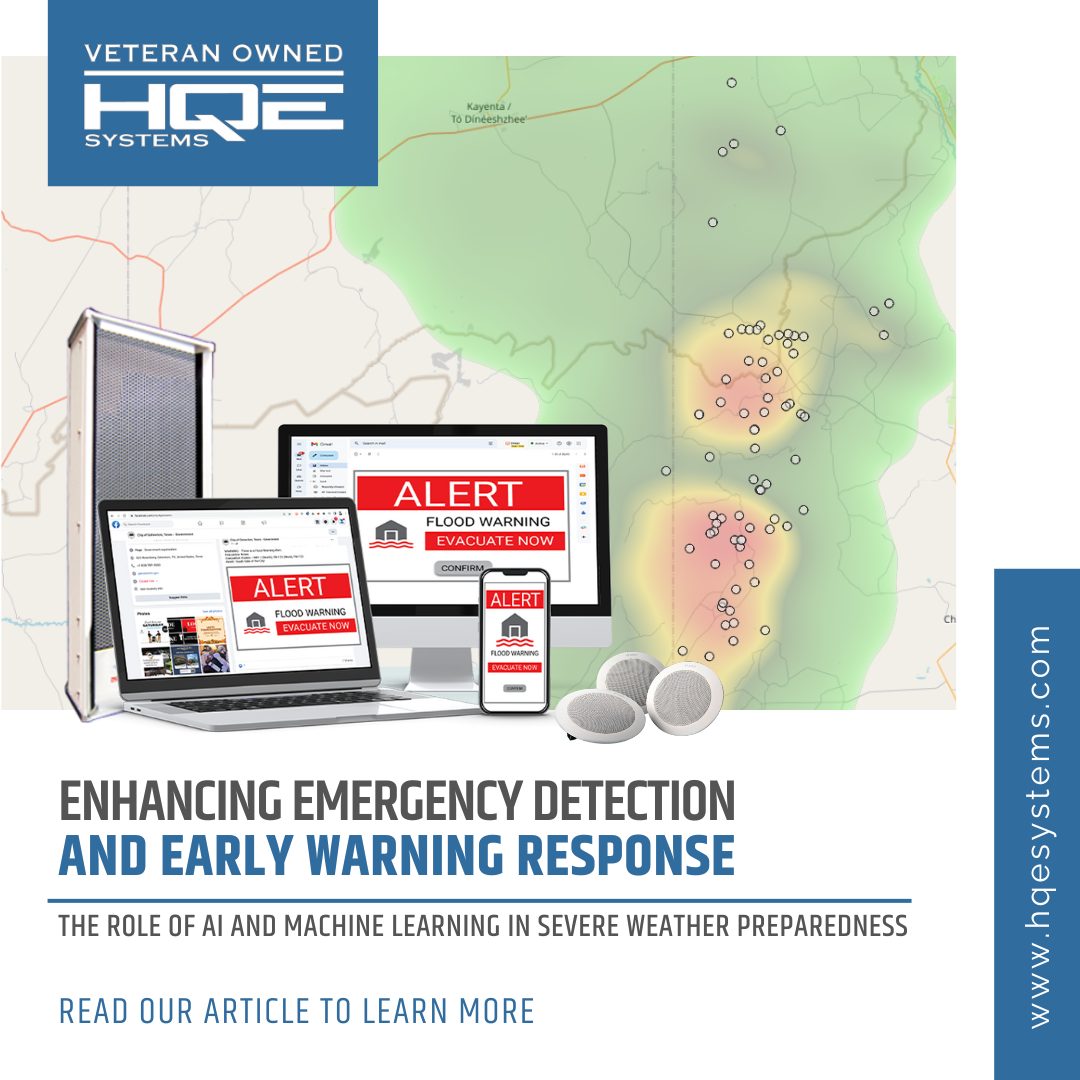Enhancing Emergency Detection And Early Warning Response: The Role Of AI And Machine Learning In Severe Weather Preparedness
Harnessing Technology to Combat Severe Weather Challenges
In recent years, the United States has seen a notable increase in severe weather events. Wildfires are ravaging the West Coast, tornadoes are wreaking havoc in the Midwest, and extreme heat waves are affecting vast areas of the country. This uptick in both the frequency and intensity of these phenomena poses significant challenges for emergency management and public safety. The growing severity demands robust and advanced solutions to enhance readiness and improve responses to these unpredictable weather events.
Section 1: Wildfires on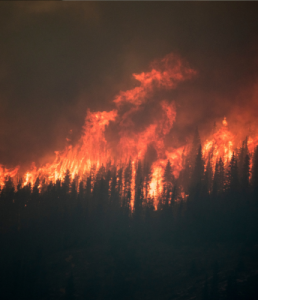 the West Coast
the West Coast
Description of Wildfire Patterns in California and Other West Coast Regions
Wildfires have become a recurring and escalating problem in California and other parts of the West Coast. The Dixie Fire, which started in Northern California on July 13, 2021, stands as a stark example of this trend. This wildfire quickly grew to be the largest single wildfire in California’s recorded history, ultimately scorching over 700,000 acres. The pattern of wildfires in this region typically involves a combination of dry conditions and strong winds, which contribute to the rapid spread and severity of the fires.
Factors Contributing to the Severity and Frequency of Wildfires
Several factors contribute to the increasing severity and frequency of wildfires in California and the West Coast:
- Forest Management Practices: Historically, forest management strategies prioritized fire suppression, which has led to an accumulation of dry underbrush and dead trees. These materials serve as significant fuel loads for wildfires, making them more intense and difficult to control when they ignite.
- Urban Development: The expansion of residential and commercial development into fire-prone areas, known as the wildland-urban interface, has increased the risk of property damage and loss of life. As more people move into these areas, the potential for human-caused fires also rises
Impact of Wildfires on Communities, Ecosystems, and the Economy
Wildfires have profound and far-reaching impacts on communities, ecosystems, and the economy:
the economy:
- Communities: Wildfires pose a direct threat to human life and property. The Dixie Fire led to the evacuation of thousands of residents and the destruction of entire towns, such as Greenville. Residents faced displacement, loss of homes, and the psychological trauma associated with these events. Health risks from smoke inhalation and poor air quality also pose significant challenges, particularly for vulnerable populations such as the elderly and those with respiratory conditions.
- Ecosystems: The ecological impact of wildfires can be devastating. Fires can destroy vast areas of forest and grassland, leading to the loss of habitats for countless species. The Dixie Fire, for example, ravaged diverse ecosystems, resulting in long-term environmental changes. Recovery and regeneration of these ecosystems can take decades, and some species may be permanently affected.
- Economy: The economic toll of wildfires is extensive. The costs associated with firefighting efforts can run into millions of dollars. Additionally, there are significant costs involved in rebuilding destroyed homes and infrastructure. Economic disruption extends to local businesses, particularly in sectors like tourism, which can be severely impacted by wildfire activity. Evacuations and the destruction of properties result in loss of income and increased financial strain on affected communities.
The Significance of the Dixie Fire
The Dixie Fire is notable not only for its size but also for its broader implications. It underscores several critical issues related to wildfire management and community preparedness. The fire’s rapid spread and the extensive damage it caused highlight the challenges faced by firefighters and emergency responders. The destruction of Greenville, a historic town, emphasizes the vulnerability of communities situated in fire-prone areas. This event also pointed to the need for better resource allocation and more effective fire management strategies.
Technological Solutions and Future Directions
Addressing the increasing threat of wildfires requires a multifaceted approach. Improved forest management practices are essential, including controlled burns and thinning to reduce fuel loads. Enhancing building codes and land-use planning can help mitigate the risk to homes and communities in fire-prone areas.
of wildfires requires a multifaceted approach. Improved forest management practices are essential, including controlled burns and thinning to reduce fuel loads. Enhancing building codes and land-use planning can help mitigate the risk to homes and communities in fire-prone areas.
Technological advancements offer promising solutions for improving wildfire detection and response. Systems that enable early detection and real-time monitoring can significantly enhance firefighting efforts. Public awareness and community preparedness programs are also vital in ensuring that residents know how to respond effectively in the event of a wildfire.
The Dixie Fire serves as a crucial reminder of the destructive power of wildfires and the urgent need for comprehensive strategies to manage and mitigate their impact. By learning from events like the Dixie Fire and leveraging technological innovations, it is possible to reduce the devastation caused by wildfires in the future.
For more detailed information, refer to the original New York Times article here.
Section 2: Tornadoes in the Central U.S.
Overview of Tornado Alley
Tornado Alley is a region in the Central United States that includes states like Oklahoma, Texas, Kansas, Nebraska, and parts of South Dakota, Missouri, and Iowa. This area experiences a high frequency of tornadoes due to its unique geographical and meteorological conditions, such as the flat terrain and the convergence of cold, dry air from the Rockies with warm, moist air from the Gulf of Mexico. These conditions create an ideal environment for severe thunderstorms and tornado formation.
Explanation of Tornado Formation
Tornadoes originate from severe thunderstorms, specifically supercells, which have a rotating updraft. The process of tornado formation involves several steps:
thunderstorms, specifically supercells, which have a rotating updraft. The process of tornado formation involves several steps:
- Thunderstorm Development: Warm, moist air near the ground rises and meets colder, drier air aloft, creating strong updrafts.
- Wind Shear: Changes in wind speed and direction with height cause the rising air to rotate horizontally.
- Mesocyclone Formation: The horizontal rotation is tilted into a vertical alignment by the updraft, forming a mesocyclone, a rotating column of air within the storm.
- Tornado Genesis: Under the right conditions, a funnel cloud develops from the mesocyclone and extends toward the ground, forming a tornado when it makes contact.
Why Tornado Alley is Particularly Prone
Tornado Alley is particularly prone to tornadoes due to:
- Geographical Location: The region’s central location facilitates the collision of contrasting air masses, such as cold air from Canada and warm air from the Gulf of Mexico.
- Flat Terrain: The expansive, flat landscape allows for the free movement of these air masses, supporting the development of severe thunderstorms.
- Storm Track Patterns: Predominant storm tracks often pass through this area, providing frequent opportunities for the necessary conditions for tornado formation to align.
Recent Example: Michigan Tornado Outbreak
On May 7, 2024, Michigan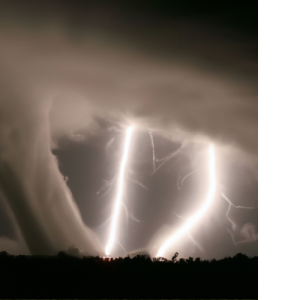 experienced a significant tornadooutbreak, highlighting the ongoing threat of tornadoes even outside the traditional boundaries of Tornado Alley. This event saw four tornadoes touch down, including:
experienced a significant tornadooutbreak, highlighting the ongoing threat of tornadoes even outside the traditional boundaries of Tornado Alley. This event saw four tornadoes touch down, including:
- Dowagiac: An EF1 tornado with winds up to 95 MPH.
- Union City: An EF1 tornado with 95 MPH winds, touching down just after 6 PM.
- Centerville: A large tornado with the National Weather Service still assessing its power.
- Portage: An EF2 tornado causing significant damage, including destruction in a mobile home park and at a new FedEx facility.
These tornadoes caused widespread destruction, displacing many residents and leaving nearly 23,000 people without power. Photos and videos of the aftermath showed uprooted trees, destroyed buildings, and extensive damage to infrastructure (USA Today).
Mitigation and Preparedness
Addressing the threat of tornadoes requires a combination of better forecasting, community preparedness, and robust emergency response systems. Advances in meteorological technology, such as improved Doppler radar systems and predictive models, have enhanced the ability to forecast and track tornadoes. These tools, combined with public education and timely alerts, can help minimize the loss of life and property damage during tornado events. Community drills and the establishment of safe rooms in homes and public buildings can also significantly improve safety during tornado outbreaks.
Section 3: Severe Heat and Health Risks in the Southern U.S.
Regions Prone to Severe Heatwaves
Severe heatwaves are increasingly prevalent in the Southern U.S., particularly in states like Arizona, Texas, and Florida. These regions frequently experience extreme temperatures during the summer months, often exceeding 100°F. Arizona, especially Phoenix, is notorious for its scorching summers. Texas and Florida also face intense heat, exacerbated by high humidity levels, making these areas particularly susceptible to dangerous heat conditions.
Health Risks Associated with Severe Heat
Heat is the leading killer among weather phenomena over the last four decades. The health risks associated with severe heat are significant and can affect anyone, particularly vulnerable populations such as the elderly, young children, and those with preexisting health conditions. Here are some key health risks:
- Heat Stress: This occurs when the body is under physical strain as it tries to regulate its internal temperature. Heat stress can lead to various heat-related illnesses.
- Heat Illness: These are
 physical injuries that result from the body’s inability to regulate internal temperature. Examples include muscle cramps, heat exhaustion, and heat stroke. Symptoms of heat illness include muscle cramps (especially in the legs or stomach), cool and wet skin, headache, nausea or vomiting, dizziness, and fainting.
physical injuries that result from the body’s inability to regulate internal temperature. Examples include muscle cramps, heat exhaustion, and heat stroke. Symptoms of heat illness include muscle cramps (especially in the legs or stomach), cool and wet skin, headache, nausea or vomiting, dizziness, and fainting.
- Heat Cramps:Painful muscle contractions often occurring after intense exercise or physical labor in hot conditions.
- Heat Exhaustion: Characterized by heavy sweating, weakness, dizziness, nausea, and fainting. It precedes heat stroke and requires prompt treatment to prevent progression.
- Heat Stroke: A life-threatening condition where the body’s temperature regulation fails, causing body temperature to rise rapidly. Symptoms include a high body temperature (above 103°F), hot, red, dry, or damp skin, rapid pulse, confusion, or unconsciousness. Immediate medical attention is crucial.
How to Treat Heat Illness
Treating heat illness promptly is essential to prevent severe health outcomes. Here are the steps:
- Cool Down Quickly: Move the affected person indoors or into the shade. Start rehydrating with water or electrolyte solutions. Use cold water or fans to help cool the body down.
- Seek Medical Help: If symptoms are severe, such as confusion, fainting, or a very high body temperature, call 9-1-1 immediately. Do not attempt to drive the affected person to the emergency room.
- Post-Exposure Care: After experiencing heat exhaustion, symptoms may persist for several days. It’s important to continue consuming fluids and resting to allow the body to recover fully.
Preventive Measures
Preventing heat-related illnesses involves a combination of personal precautions and public health strategies:
- Stay Hydrated: Drink plenty of fluids, especially water, throughout the day. Avoid beverages that can lead to dehydration, such as alcohol and caffeinated drinks. It is crucial to drink even if you do not feel thirsty, as thirst is not always an accurate indicator of hydration status.
- Wear Appropriate Clothing: Light-colored, loose-fitting, and lightweight clothing helps keep the body cool. Wearing a wide-brimmed hat and sunglasses can protect against sun exposure.
- Limit Outdoor Activities: Avoid strenuous outdoor activities during the hottest parts of the day, typically between 10 a.m. and 4 p.m. If outdoor activities are necessary, take frequent breaks in the shade or indoors and reduce the intensity of the activity.
- Use Sunscreen: Apply a
 broad-spectrum sunscreen with an SPF of at least 30 to all exposed skin, and reapply every two hours, or more often if sweating or swimming.
broad-spectrum sunscreen with an SPF of at least 30 to all exposed skin, and reapply every two hours, or more often if sweating or swimming. - Stay Indoors: Spend time in air-conditioned environments during peak heat periods. If your home does not have air conditioning, consider visiting public places such as shopping malls, libraries, or community centers.
- Check on Vulnerable Individuals: Regularly check on elderly family members, neighbors, and others who may be more susceptible to heat-related illnesses to ensure they are staying cool and hydrated.
- Educate the Community: Public health campaigns can raise awareness about the dangers of extreme heat and the importance of taking preventive measures. Schools, workplaces, and community organizations should be proactive in educating their members about heat safety.
Recognizing Heat Illness Conditions
Conditions favorable for heat illness can be identified using tools such as the National Weather Service’s WBGT (Wet Bulb Globe Temperature) calculator and OSHA’s guidance on heat stress. These tools help assess the risk of heat stress based on temperature, humidity, wind speed, and solar radiation, enabling better preparedness and response to extreme heat conditions.
Section 4: Challenges and Problems Posed by Hurricanes
Overview of the Southern U.S.
Hurricanes predominantly impact the southeastern United States, including states like Florida, Texas, Louisiana, and the Carolinas. These areas are especially vulnerable due to their proximity to the Atlantic Ocean and the Gulf of Mexico, where warm waters foster the development of these powerful storms.
Hurricane Formation and Climatic Conditions
Hurricanes, also known as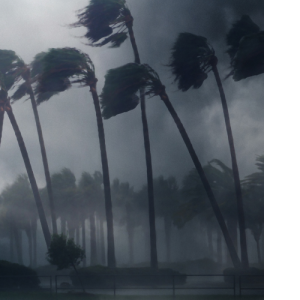 tropical cyclones, form over warm ocean waters. The key steps in their development include:
tropical cyclones, form over warm ocean waters. The key steps in their development include:
- Warm Ocean Waters: Hurricanes require ocean temperatures above 80°F to provide the necessary energy.
- Low-Pressure System: A pre-existing low-pressure area or tropical disturbance initiates the process.
- Moist Air: Rising warm, moist air cools and condenses, releasing heat and causing further air pressure drops, which lead to thunderstorm formation.
- Coriolis Effect: Earth’s rotation causes the storm to spin, creating the circular motion characteristic of hurricanes.
These conditions are most common during the Atlantic hurricane season from June 1 to November 30, with peak activity from late August to September.
Impacts of Hurricanes
Hurricanes bring numerous severe impacts, including:
- Storm Surge: This is one of the deadliest aspects, where the hurricane’s winds push water onshore, leading to significant coastal flooding.
- High Winds: Hurricanes can produce extremely strong winds, causing widespread damage to structures, trees, and power lines.
- Heavy Rainfall and Flooding: Hurricanes can cause torrential rains, leading to both coastal and inland flooding. Flash flooding is a major concern.
- Tornadoes: Hurricanes often spawn tornadoes, which can cause additional destruction.
- Economic and Social Impact: Hurricanes disrupt lives, displace communities, damage infrastructure, and have long-term economic impacts.
Case Study: Hurricane Idalia (2023)
Hurricane Idalia made landfall as a Category 3 hurricane near Keaton Beach, Florida, on August 30, 2023. It caused significant damage with storm surge inundation of 7 to 12 feet and widespread rainfall flooding across Florida and the southeastern United States. The hurricane’s winds peaked at 130 mph, resulting in extensive power outages and structural damage. Idalia’s rapid intensification before landfall highlights the unpredictability and severity of hurricanes (Florida Climate Center) (WINK News).
Challenges in Hurricane Management
The management of hurricanes poses several challenges:
- Predictive Accuracy:
 Accurately predicting the path and intensity of hurricanes remains a significant challenge. Rapid intensification, as seen with Hurricane Idalia, can complicate forecasts and preparedness efforts.
Accurately predicting the path and intensity of hurricanes remains a significant challenge. Rapid intensification, as seen with Hurricane Idalia, can complicate forecasts and preparedness efforts. - Timely Evacuations: Ensuring timely and effective evacuations is critical but challenging due to the unpredictable nature of hurricanes and the logistical complexities involved.
- Infrastructure Resilience: Many coastal communities have vulnerable infrastructure that is not designed to withstand the extreme conditions brought by hurricanes.
- Resource Allocation: Efficiently allocating resources for emergency response and recovery efforts is crucial but can be hampered by the scale and severity of the storm impacts.
- Public Awareness and Preparedness: Educating the public and ensuring communities are prepared for hurricanes is a continuous effort that requires robust communication and engagement strategies.
Conclusion
Hurricanes present significant challenges, from predicting their behavior to managing the impacts on communities. The case of Hurricane Idalia in 2023 underscores the importance of advanced monitoring, timely warnings, and coordinated response efforts to mitigate the damage caused by these powerful storms. Addressing these challenges involves not only technological advancements but also improved infrastructure resilience and community preparedness efforts. For detailed information on Hurricane Idalia, refer to this report (Florida Climate Center).
HQE Systems Technology for Mitigating Severe Weather Challenges
Introduction
HQE Systems offers advanced technology solutions designed to mitigate the impacts of severe weather events such as wildfires, tornadoes, extreme heat, and hurricanes. Their SiSA software that has the ability to integrate into technologies are pivotal in enhancing early detection, real-time monitoring, and effective communication during such events. Additionally, HQE Systems’ solutions leverage Artificial Intelligence (AI) and Machine Learning (ML) to further enhance predictive accuracy and response efficiency.
SiSA Software for Wildfire Management
SiSA software utilizes advanced sensors and AI algorithms to detect the early signs of wildfires. By continuously monitoring environmental conditions like temperature, humidity, and wind speed, the software identifies potential fire outbreaks before they become unmanageable. AI helps in analyzing vast amounts of data from various sensors to spot anomalies that might indicate a fire. Machine Learning (ML) models improve over time by learning from past wildfire data, enhancing the predictive accuracy of the system.
sensors and AI algorithms to detect the early signs of wildfires. By continuously monitoring environmental conditions like temperature, humidity, and wind speed, the software identifies potential fire outbreaks before they become unmanageable. AI helps in analyzing vast amounts of data from various sensors to spot anomalies that might indicate a fire. Machine Learning (ML) models improve over time by learning from past wildfire data, enhancing the predictive accuracy of the system.
This early detection allows firefighting teams to respond quickly, often before the fire spreads extensively. The software also provides comprehensive data on fire behavior, such as the direction and speed of spread, helping firefighters strategize effective containment efforts. This capability is crucial in regions like California, where wildfires can cause significant damage to communities and ecosystems.
Tornado Prediction and Real-Time Alerting
For tornadoes, HQE Systems integrates data from Doppler radar, weather stations, and satellite imagery to provide continuous monitoring of storm conditions. AI and ML algorithms analyze weather patterns to forecast the likelihood of tornado formation. By learning from historical tornado data, these models can improve the accuracy of predictions over time. This real-time data helps emergency management teams issue timely warnings, ensuring that communities can take necessary precautions to minimize damage and save lives.
For example, the system can track storm cells and identify when conditions are ripe for tornado development, providing crucial lead time for residents to seek shelter. The integration of AI enhances the system’s ability to detect subtle changes in weather conditions that may precede a tornado.
Heatwave Monitoring and Public Safety
HQE Systems also addresses the challenges posed by extreme heat. Their technology includes tools for monitoring temperature, humidity, and other meteorological data to predict heatwaves. AI algorithms analyze patterns in weather data to forecast heatwave occurrences with high accuracy. ML models can improve these predictions by learning from previous heatwave events.
The system can send real-time alerts to communities, advising on preventive measures such as staying hydrated, avoiding outdoor activities during peak heat, and seeking air-conditioned environments. This proactive approach helps reduce the incidence of heat-related illnesses and fatalities, which are especially common in regions like Arizona and Texas.
Hurricane Monitoring and Response
HQE Systems’ SiSA software also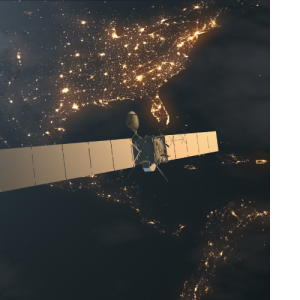 plays a vital role in monitoring and responding to hurricanes. The software uses data from satellites, radars, and ocean buoys to track hurricane development and movement. AI and ML models analyze this data to provide accurate forecasts of a hurricane’s path and intensity. By integrating real-time data, SiSA allows authorities to issue timely warnings and coordinate evacuation plans effectively.
plays a vital role in monitoring and responding to hurricanes. The software uses data from satellites, radars, and ocean buoys to track hurricane development and movement. AI and ML models analyze this data to provide accurate forecasts of a hurricane’s path and intensity. By integrating real-time data, SiSA allows authorities to issue timely warnings and coordinate evacuation plans effectively.
For instance, during Hurricane Idalia in 2023, SiSA’s real-time data and predictive analytics enabled precise tracking of the storm, helping communities in Florida prepare and respond more effectively to mitigate damage and ensure safety (Florida Climate Center) (WUSF ). AI models can learn from each hurricane event, continuously improving their predictive capabilities.
Integration of Technologies
The integration capabilities of HQE Systems allow for seamless incorporation of various data sources and technologies into a unified platform. This includes the use of IoT devices, drones, and mobile apps to gather and disseminate information. AI-driven analytics enhance the interpretation of data collected by these devices. For instance, drones equipped with thermal imaging cameras can provide real-time aerial views of wildfire spread, and AI can quickly analyze this imagery to support strategic decision-making.
Mobile apps can deliver instant alerts and safety instructions to residents in affected areas, ensuring they have the information needed to take immediate action. The use of AI ensures that alerts are precise and timely, based on the latest available data.
Community Engagement and Education
In addition to technological solutions, HQE Systems emphasizes community engagement and education. Their platforms can be used to conduct public awareness campaigns, educating communities about the risks of severe weather and the steps they can take to stay safe. AI-driven tools can personalize education materials based on user profiles and local weather conditions, enhancing the effectiveness of these campaigns.
solutions, HQE Systems emphasizes community engagement and education. Their platforms can be used to conduct public awareness campaigns, educating communities about the risks of severe weather and the steps they can take to stay safe. AI-driven tools can personalize education materials based on user profiles and local weather conditions, enhancing the effectiveness of these campaigns.
This comprehensive approach ensures that both technology and an informed citizenry work together to enhance resilience against severe weather events. For example, educational modules on the platform can teach residents about the signs of heat exhaustion and the importance of hydration, thereby reducing the risk of heat-related health issues during extreme heatwaves.
Case Study: Wildfire Management
A practical example of HQE Systems’ impact is their role in managing wildfires in California. By deploying SiSA software, local authorities could detect small fires in remote areas before they grew uncontrollably. The software’s real-time data allowed for precise allocation of firefighting resources, minimizing damage and saving lives. The integration with drone technology provided continuous updates on fire progression, enabling firefighters to adapt their strategies effectively.
Case Study: Tornado Alerting
In the Midwest, where tornadoes are prevalent, HQE Systems has significantly improved the timeliness and accuracy of tornado warnings. During a recent tornado outbreak in Oklahoma, the system’s predictive analytics accurately forecasted tornado formation hours in advance. This lead time allowed for extensive community preparation, reducing injuries and fatalities. Real-time updates during the event kept residents informed about the storm’s path and provided guidance on safety measures.

Future Directions
Looking forward, HQE Systems plans to enhance their technology further by incorporating more advanced AI and machine learning algorithms to improve predictive accuracy. They are also exploring partnerships with local governments to expand the reach of their technologies, ensuring more communities benefit from their innovations. By continuing to develop and integrate new technologies, HQE Systems aims to set a new standard in severe weather management and community safety.
Conclusion
HQE Systems’ advanced technologies like SiSA software, along with their integration capabilities, significantly enhance the ability to detect, monitor, and respond to severe weather challenges. The incorporation of AI and ML further improves the predictive accuracy and response efficiency, making it possible to mitigate the impacts of severe weather more effectively. These innovations not only improve emergency response but also empower communities with the information they need to protect themselves during extreme weather events. Through continuous improvement and community engagement, HQE Systems is at the forefront of mitigating the impacts of severe weather in the Southern U.S. and beyond.
HQE Systems is a certified Veteran Owned Company. For more information about HQE Systems Inc. and its emergency management, electronic security, and integration solutions, please visit www.hqesystems.com.

Contact: David Ditto (Early Warning Systems Subject Matter Expert)
Email: David.Ditto@hqesystems.com
Phone Number: (843) 872-7020
____________________
HQE Systems, Inc. | HQE is a Minority-Owned Service Disabled Veteran Owned Small Business (SDVOSB) providing full solutions for: Mass Notification Systems, Electronic Security Systems, Software Development Services, Contract Support, and Prototyping Services. As a brand-agnostic solutions provider, HQE prides itself in providing the BEST solution for the project. HQE possesses over 30+ factory certifications and reseller licenses to ensure our clients receive the highest quality service at the ideal budget. HQE can provide full design, installation, integrations, upgrades, and long-term maintenance support for any size and scope project.

